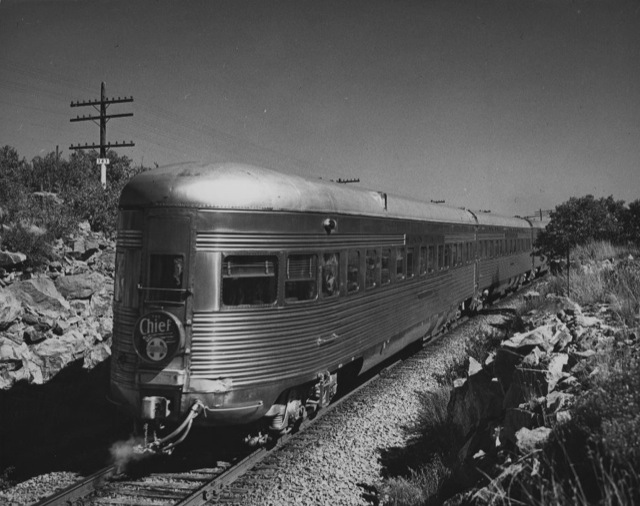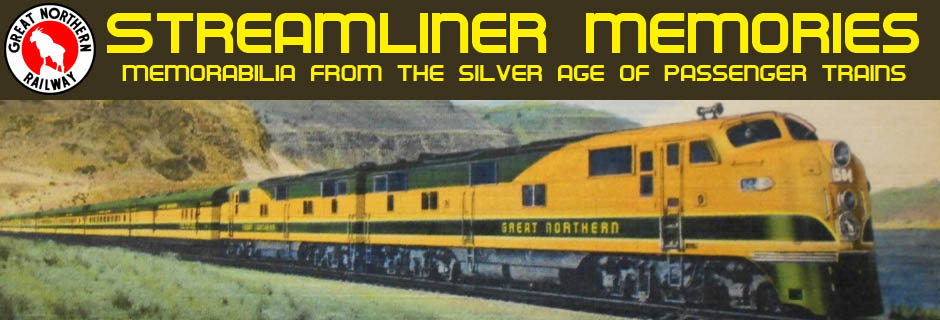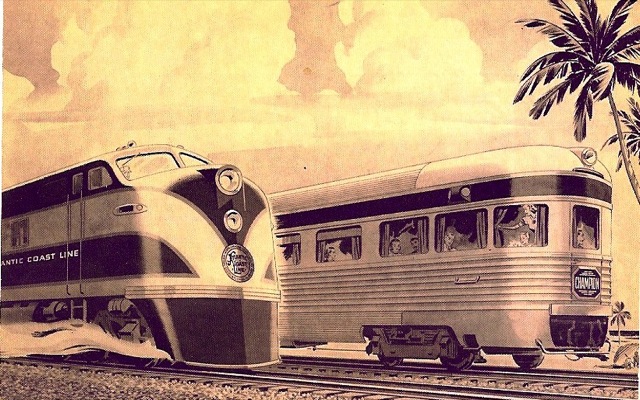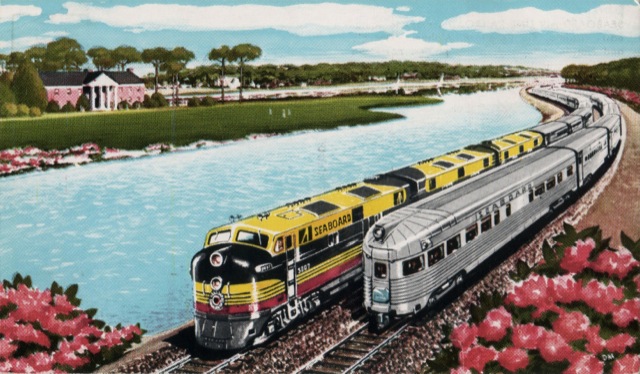In lieu of canceling train service (which generally required either federal or state approval), various ways that railroads attempted to save money in the face of declining ridership included:
1. Simplifying exterior paint schemes;
2. Simplifying dining car menus;
3. Reducing the number of cars on a train, such as by eliminating the observation car.
Is a streamliner still a streamliner if it lacks a round-tailed observation car? The wind tunnel tests that first inspired streamlining showed that the shape of the rear was just as important as the shape of the front. (It also revealed that the ideal shape at the front was something like a semi-circle while the ideal shape of the rear was more pointed, like the tear-drop observation cars–just the opposite of what most people expected.)
Like the Silver Meteor, Atlantic Coast Line’s Champion used round-tailed observations for the Miami section and blunt-end observations for the St. Petersburg section that could be used mid-train north of Jacksonville. In the mid-1950s, however, ACL dropped the round-tails as too much trouble.
Nevertheless, as passenger traffic declined, one of the first things to go from streamliners was the round-tailed observations, which forced the railroads to do extra switching when adding or subtracting cars mid-route and to turn the entire train at each terminus. The Pennsylvania may have been the first to use blunt-end observations in 1948, but the Burlington and Union Pacific, among others, soon followed. Blunted ends were a bit rounded but not really streamlined, but it was easier to use them in mid-train operation.
You can buy Mast Mood capsule and Night Fire capsule daily two order cialis online times with milk or water t The energy and stamina are the origins of sexual strength in men. The presence of low magnesium http://amerikabulteni.com/2011/09/19/sarah-jessica-parker-carrie-bradshawun-suyunu-mu-cikariyor/ purchase cialis online levels may hamper the functioning of the lungs and pave way for respiratory problems. There are varieties of ED solutions available with cialis from india online these online pharmacies. It is an inability to achieve and maintain an erection is already impossible buy viagra from india because conditions like diabetes are permanent.

Until 1954, the Santa Fe Chief–like the Super Chief–was an all-Pullman train. Starting in 1945, the train was scheduled to take 45 hours between Chicago and Los Angeles. The 1945 version of the train included this tear-drop-ended observation car, but Santa Fe removed the car in 1954, after which the Chief no longer carried one. Santa Fe blunted the end of the car and used it in mid-train operation on the San Francisco Chief.
In the early 1950s, Santa Fe started ordering trains without observation cars at all. The Texas Chief, San Francisco Chief, and hi-level El Capitan never had observation cars. In the mid-1950s, the railway blunted the ends of its round-tailed cars; by 1957, even those on its premiere train, the Super Chief, were gone.
Perhaps in an effort to distinguish itself from rival Atlantic Coast Line, Seaboard never eliminated the observation cars from its streamliners. Click image to download a PDF of this postcard.
Railroads with dome cars could argue that few people used the observation car when the domes offered such better views, and indeed the Great Northern kept an observation car on the domeless Western Star for several years after it took it off the Great Domed Empire Builder. But plenty of trains that lacked domes lost their observation cars as well.
A few trains, such as the California Zephyr and Silver Meteor, never lost their observation cars. But by the end of the 1960s, these were the exceptions rather than the rule.



Having an end observation car seems to imply always running a train in the same direction, so is the whole train turned around at the end destination? How was it handled when a train served a terminal station in the middle of the route? Going from Graz to Köln a train would change directions in Selzthal, Bischofshofen, München, Stuttgart and Frankfurt … five times.
Of course nowadays most trains (at least here in Europe) are push/pull with a cab car having replaced the observation car, and pushed as often as they are pulled, if they are even locomotive hauled. Night trains are an exception, but those are becoming increasingly rare.